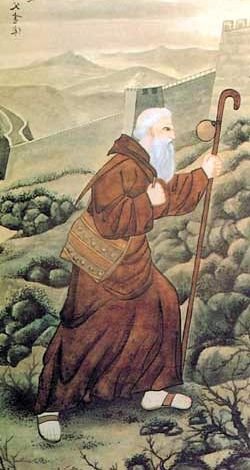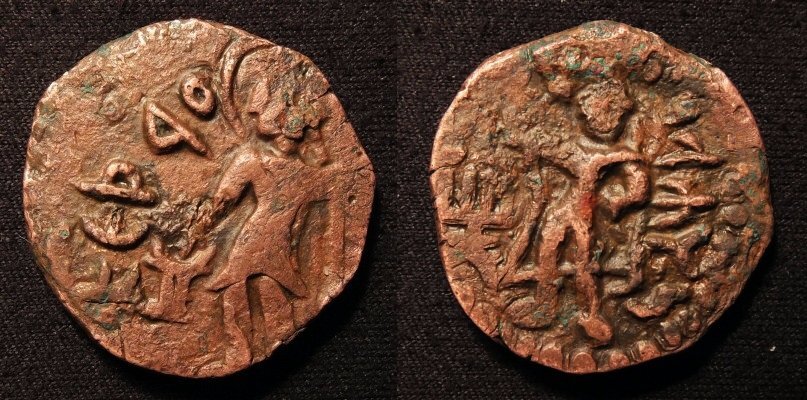Ep. 245 | The History of Xinjiang (Part 2)
In this Part 2 episode, we leave pre-history behind and look at Xinjiang’s importance during the Qin and Han dynasties. Here is where the Han Chinese interaction with these lands far to the west began.
Though a good portion of today’s episode doesn’t actually take place in Xinjiang, the story of the Xiongnu, Zhang Qian, and the rise of Han Dynasty China is central to everything that follows later.
Listen On Your Favorite Podcast Player
Terms in Episode
| Pinyin/Term | Chinese | English/Meaning |
|---|---|---|
| Battle of the Héxī Corridor | 河西之战 | 121 BCE Battle of Héxī saw the Xiongnu pushed out of that most strategic area |
| Cháng’ān | 长安 | Present day Xian, in Shaanxi province. Capital of the Western Han, the Tang and a few other dynasties |
| Chányú | 單于 | The title of the Xiongnu leader. Also pronounced Shanyu |
| Chǔ | 楚 | The powerful kingdom in central China where Hubei is mostly located led by Xiang Yu |
| Cǎoyuán Sīchóu zhī lù | 草原丝绸之路 | the Silk Road of the Steppe |
| Dàyuān | 大宛 | A city located in the Ferghana Valley….today’s northern Tajikistan |
| dūhù | 都护 | The title of the head administrator for those frontier regions |
| Dūnhuáng | 敦煌 | City in western Gansu famous for the Mogao Grottos and the treasures carted away by Air Aurel Stein and others |
| Guìshuāng | 貴霜 | Empire better known in the West as the Kushan Empire. They originally came from the Great Yuezhi |
| Gāixià | 垓下 | Near present day Suzhou, Anhui (not the Jiangsu one). Site of the final battle between Liu Bang and Xiang Yu |
| Gānsù | 甘肃 | Western province of China where Dunhuang and the Hexi Corridor is located |
| Huì | 惠帝 | The Han Emperor Hui, reigned 195-188 BCE |
| Huò Qùbìng | 霍去病 | 140-117 BCE, Great Han general known for his battles and victories in the west of China |
| Hàn Dynasty | 汉朝 | The Chinese dynasty founded by Liu Bang. The Western Han is also known as the Former Han and ran from 206 BCE to 9 CE |
| Hàn Gāozǔ | 汉高祖 | The temple name of Liu Bang, founder of the Han Dynasty |
| Hàn Wǔdì | 汉武帝 | One of greatest Chinese emperors of all time. Reigned from 141-87 BCE |
| Hàn-Xiōngnú Wars | 汉匈战争 | The wars that ran from 133 BCE to 89 CE between the forces of Han China and the Xiongnu Empire |
| Héqīn | 和亲 | He meant peace and qin was a relative...this was a system of appeasement that kept the warlike tribes from harrassing and invading China south of the Great Wall |
| Héxī Corridor | 河西走廊 | Also known as the Gansu Corridor, the main road from westernmost China to the easternmost Tarim Basin where the northern route of the Silk Road began |
| Kashgar | 喀什 | Westernmost major city in Xinjiang and one of the most important of all trading centers along the Silk Road |
| Khotan | 和田 | The Kingdom of Khotan, now the xity of Hetian in southern Xinjiang |
| Liú Bāng | 刘邦 | Founder of the Han Dynasty who defeated Xiang Yu in the Chu-Han Contention |
| Liú Chè | 刘彻 | reign 141 to 87 BCE |
| Lop Nor / Luóbù Pō | 罗布泊 | Ancient salt lake, now mostly dried up where two of Xinjang's greatest rivers flowed into. Lop Nor once covered 10,000 square km of area |
| Línfén, Shānxī | 山西临汾 | Capital of the Legendary Emperor Yao, located in Shanxi province |
| Lóulán | 楼兰 | Known also as Krorän, an ancient kingdom on the north shores of Lop Nor. Loulan was later renamed Shanshan after China took it over |
| Méng Tián | 蒙恬 | Heroic general during the Qin Dynast. Died in 210 BCE |
| Mòdú | 冒頓 | 234-174 BCE, Xiongnu leader who build the Xiongnu Empire |
| Qing Dynasty. | 清朝 | Last Chinese imperial dynasty that ran 1644-1912 |
| Qiāng | 羌族 | Minority people in China who live up in Northwest Sichuan and the Tibetan Plateau. |
| Qín Dynasty | 秦朝 | The first imperial dynasty of China |
| Qín Shǐhuáng | 秦始皇 | The first Emperor of China |
| Qīnghǎi | 青海 | Western province of China near Tibet and Xinjiang |
| Shǎnxī | 陕西 | Northwest province of China. Xian is located there. |
| Sāi | 塞 | The Saka people, an Indo-Iranian linguistic group |
| Tang Dynasty | 唐朝 | One of China's greatest dynasties. Ran from 618-907 CE with a brief interruption |
| Tiānmǎ | 天马 | Heavenly Horses, the famous horses of the Ferghana Valley out near the Yili River Valley |
| Tiānshān | 天山 | The Heavenly Mountains, located north of the Tarim Basin |
| Tóumàn | 头曼 | Xiongnu leader defeated in 215 BCE by the Qin Army led by Meng Tian. Touman's son was Modu |
| Túntián | 屯田 | “state farms worked by Han soldiers.” |
| Wèi Qīng | 卫青 | Died in 106 BCE, another great Han general known for his battles and victories in the west of China with Huo Qubing |
| Wén | 文帝 | The Han Emperor Wen, reigned 180-157 BCE |
| Wūsūn | 乌孙 | One of the Indo-European semi-nomadic steppe people. They came from around Gansu |
| Xinjiang | 新疆 | The area that is now contained in the Xinjiang Uyghur Autonomous Region in China. Also known by many names prior to 1884 |
| Xiàng Yǔ | 项羽 | The powerful leader of Chu State who was defeated by Liu Bang at Gaixia in 202 BCE |
| Xiōngnú | 匈奴 | A once powerful confederation of tribes whose empire once stretched from the eastern reaches of the Mongol homeland and into East Central Asia |
| Xiǎo Hé | 小河 | Also known as the Ördek Necropolis, an ancient site not far from Lop Nor that contained a great number of Tarim Mummies |
| Xī Zhōu | 西周 | Western Zhou Dynasty. Also known as the Former Zhou. Ran from 1045 BCE to 771 BCE |
| Yuèzhī | 月氏 | A nomadic people originally based in anf around Gansu Province |
| Yīlí River | 伊犁河 | Major river part in Xinjiang and part in Kazakhstan |
| Zhāng Qiān | 张骞 | The great Han adventurer who journeyed to the West between 138-126 BCE and whose story is immortalized in ancient Chinese texts |




























Laszlo chats with author Scott Crawford about the Han Dynasty, the Xiongnu, and Rome.